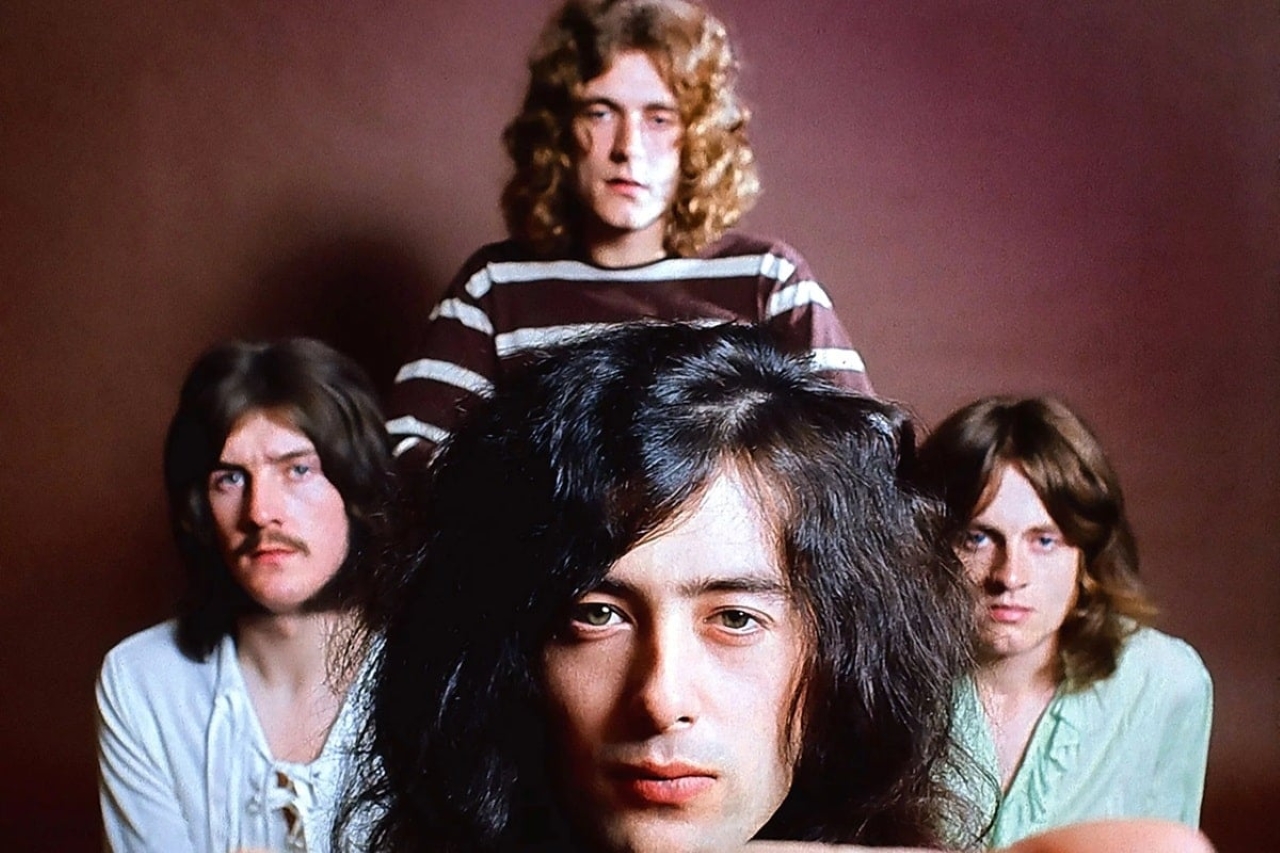🌟 A Timeless Song Born in a Cold, Empty House
In late 1970, Led Zeppelin escaped the blinding stage lights and retreated to Headley Grange, an old, draughty country mansion in Hampshire, England. It wasn’t a professional studio—more like a crumbling stone manor with creaky floors and cold air seeping through cracks in the walls. But for the band, it was the perfect hideaway from pressure, deadlines, and the constant demands of fame.
One evening, Jimmy Page sat near the fireplace, an acoustic guitar resting on his knee. He began picking a series of chords—soft, flowing, yet filled with an unexplainable weight. Robert Plant stood nearby, listening. Something in those notes seemed to pull words out of the air. Without much thought, Plant began to scribble:
“There’s a lady who’s sure all that glitters is gold…”
It was as if the song was writing itself. In that cold, empty room, one of rock’s greatest epics was born.

🔮 A Song That Grew Like a Spell
Unlike most rock tracks that burst into life in a rush of energy, Stairway to Heaven took shape slowly, like a ritual. Jimmy Page envisioned it as a song that would start softly, then build in intensity, carrying listeners upward until it exploded into a soaring electric climax.
John Paul Jones added recorders to the opening, giving the song a medieval, almost mystical quality. Bonham held back at first, letting the piece breathe. When his drums finally came in halfway through, they were like a heartbeat suddenly quickening.
Robert Plant later admitted that much of the lyric felt “handed” to him—an unconscious flow rather than a calculated message. The imagery—golden ladies, May queens, piper calls—was dreamlike, weaving together myth, mysticism, and personal reflection.
The result wasn’t just a song—it was an eight-minute journey that felt both ancient and eternal.
⚡ The Night the World First Heard It
On March 5, 1971, at the Ulster Hall in Belfast, Led Zeppelin performed Stairway to Heaven for the very first time. There was no fanfare, no introduction. Page began playing those opening notes, and the crowd—expecting a hard rock explosion—was instead drawn into something almost spiritual.
By the time Plant sang the final line, “And she’s buying a stairway to heaven,” and Page’s solo had torn through the air like lightning, the room erupted. The audience didn’t just clap—they stood, almost in reverence.
From that moment on, Stairway was no longer just another track on their upcoming album. It was destined to be the song everyone would talk about.
🖤 Love, Hate, and the Song That Refused to Die
Ironically, despite being one of the most beloved songs in rock history, Stairway to Heaven was never released as a single in the UK or US. The band wanted it to remain an album experience, something listeners would have to sit with from start to finish.
This didn’t stop it from becoming the most requested song on FM radio during the 1970s. For years, DJs played it daily—sometimes multiple times a day. But not everyone was enchanted. Some critics dismissed it as self-indulgent, too long, or lyrically vague.
Robert Plant himself went through a love-hate relationship with it. By the 1980s, he admitted feeling “a little tired” of performing it every night. Yet, whenever they played it live, the audience reaction reminded him why it couldn’t be left out.
🧩 The Dark Rumors and Backmasking Controversy
In the early 1980s, a bizarre controversy erupted. Some claimed that if you played Stairway to Heaven backwards, hidden satanic messages could be heard—phrases like “Here’s to my sweet Satan.”
Jimmy Page, a collector of occult books and Aleister Crowley memorabilia, was accused of sneaking in these messages intentionally. The band denied everything, calling it coincidence and the result of people hearing what they wanted to hear.
The controversy only fueled the song’s mystique. Parents warned their kids, preachers condemned it, and teenagers—of course—were more drawn to it than ever.
🌄 A Solo for the Ages
Jimmy Page’s guitar solo in Stairway to Heaven is often ranked among the greatest in rock history. What makes it remarkable is that it wasn’t meticulously composed—Page recorded multiple takes, each improvised, until one felt right.
It’s not the fastest solo, nor the most technically complex, but it tells a story—rising, falling, and finally exploding in a burst of emotion. Guitarists still study it, trying to capture its balance of restraint and release.
🏆 Legacy That Outlived the Band
When John Bonham died in 1980, Led Zeppelin ended. But Stairway to Heaven didn’t fade with them. It became a rite of passage for guitarists, a wedding song for romantics, a symbol of the 1970s, and a centerpiece in the debate over the “greatest rock song ever.”
In 1991, Atlantic Records presented Led Zeppelin with an award for the song’s over three million radio plays in the US alone. By the 2000s, that number had doubled.
And yet, Plant has repeatedly refused to reunite just to play Stairway. He insists the magic of the song belonged to a specific time and place—and that’s why it remains untouchable.
🎤 One Last Time
In 2007, at the Ahmet Ertegun Tribute Concert in London, Robert Plant, Jimmy Page, John Paul Jones, and Jason Bonham (John’s son) took the stage together. For the first time in decades, they performed Stairway to Heaven live.
Plant sang it differently—older, deeper, more fragile. Page’s solo carried an extra weight. And when the final chord rang out, the crowd stood in silence for a moment before erupting in cheers. It felt like the closing of a circle.
That night, Stairway to Heaven wasn’t just a song. It was a memory made flesh, a bridge between past and present, and proof that some pieces of music truly never die.